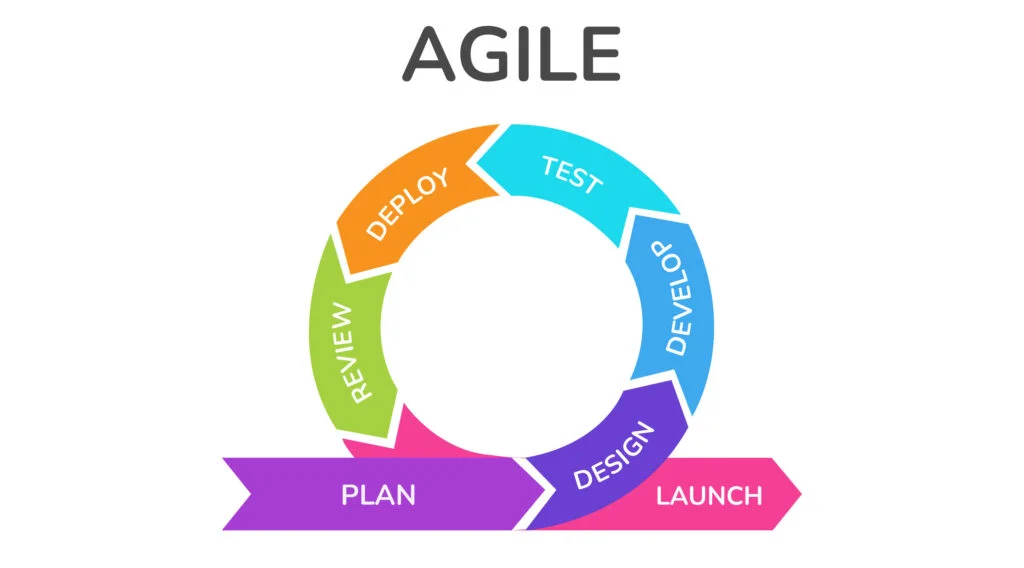Table of Contents
In today’s dynamic digital landscape, businesses must remain adaptable to meet evolving customer demands and industry challenges. Agile development has emerged as a cornerstone methodology for achieving this adaptability, fostering an environment that prioritizes flexibility, collaboration, and speed. Complementing this approach are techniques like rapid prototyping and sprint-based development, which together facilitate the creation of cutting-edge digital solutions tailored to users’ needs.
Agile Development: A Framework for Modern Businesses
Agile development focuses on iterative progress, ensuring that software projects are delivered in incremental stages. This iterative process allows teams to:
- Quickly adapt to changes in project requirements.
- Continuously incorporate user feedback.
- Deliver a minimum viable product (MVP) in record time.
This framework shifts away from rigid traditional approaches, promoting a culture of continuous improvement. By emphasizing short cycles, Agile ensures that any potential roadblocks or challenges are identified and addressed promptly.
Rapid Prototyping: Accelerating Innovation
Rapid prototyping is integral to the Agile methodology. By creating functional models early in the development process, teams can:
- Gain a clearer understanding of user requirements.
- Test and validate features with real users.
- Save time by identifying design flaws before full-scale implementation.
When combined with Agile principles, rapid prototyping ensures that digital solutions are not only innovative but also user-centric. For instance, startups leveraging rapid prototypes can present a tangible vision of their product to stakeholders or investors, increasing the likelihood of buy-in and funding.
Sprint-Based Development: The Engine of Agile
Sprints are the backbone of Agile development. Each sprint—typically lasting two to four weeks—is a time-boxed effort focused on delivering a specific set of functionalities. This approach enables teams to:
- Maintain clear goals and priorities.
- Foster collaboration through regular team meetings and reviews.
- Measure progress consistently and transparently.
Sprint-based development is especially valuable in large projects, where breaking down tasks into manageable pieces can significantly improve efficiency and reduce stress. Teams using this approach often experience a stronger sense of accomplishment and alignment with project objectives.
Crafting Digital Solutions for the Modern Era
Incorporating Agile methodologies like sprint-based development and rapid prototyping allows businesses to craft digital solutions that align seamlessly with user expectations. Whether building enterprise software, e-commerce platforms, or mobile applications, the Agile mindset ensures solutions that are:
- Scalable for future growth.
- Adaptable to emerging technologies.
- Reliable and resilient under evolving market conditions.
A critical advantage of Agile-driven digital solutions is their ability to stay ahead of technological trends. Companies employing this approach can integrate features like AI-driven analytics, cloud-based infrastructures, or IoT connectivity with minimal disruptions.
The Role of Software Consulting in Agile Development
Software consulting plays a pivotal role in optimizing Agile development workflows. Skilled consultants provide:
- Strategic guidance tailored to specific business goals.
- Expertise in selecting and implementing Agile tools and frameworks.
- Insights into industry best practices.
By bridging the gap between technical teams and business stakeholders, software consultants ensure that Agile projects remain aligned with organizational objectives. Businesses seeking to optimize their digital solutions often rely on consulting services to maximize the return on investment (ROI).
Aligning with the Latest Google Algorithms: SEO Considerations
Content creation and Agile development share a common goal: delivering user value. Adhering to Google’s latest algorithms, businesses must prioritize high-quality, meaningful content in their digital solutions. Key considerations include:
- Keyword Optimization: Integrating targeted keywords such as “Agile Development,” “Rapid Prototyping,” and “Software Consulting” naturally throughout the content.
- Mobile-First Design: Ensuring all digital solutions perform seamlessly across devices.
- Core Web Vitals: Enhancing page load speed, interactivity, and visual stability.
- User-Centric Design: Aligning design and content strategies to provide a seamless user experience.
By leveraging these principles, businesses can achieve higher search engine rankings while delivering exceptional user experiences.
Transforming Business Outcomes with Agile Development
The real power of Agile development lies in its ability to transform business outcomes. Companies adopting Agile methodologies experience:
- Faster time-to-market for new products.
- Improved collaboration across cross-functional teams.
- Greater flexibility in addressing market changes.
Industries ranging from healthcare to e-commerce have reaped the rewards of Agile principles. For instance, Agile frameworks in healthcare have expedited the development of patient-centric telemedicine platforms, while e-commerce giants have implemented Agile to enhance personalized shopping experiences.
Conclusion
Agile development, paired with tools like rapid prototyping and sprint-based workflows, is reshaping how digital solutions are designed and delivered. The inclusion of software consulting ensures that projects not only meet but exceed user expectations, driving success in today’s competitive digital landscape. By embracing this methodology, businesses can remain agile, innovative, and positioned for sustained growth.
To thrive in an era defined by technological advancements, Agile development isn’t just an option; it’s a necessity. Leverage its principles, and you’ll discover a path to creating impactful digital solutions that resonate with users and deliver measurable value.





